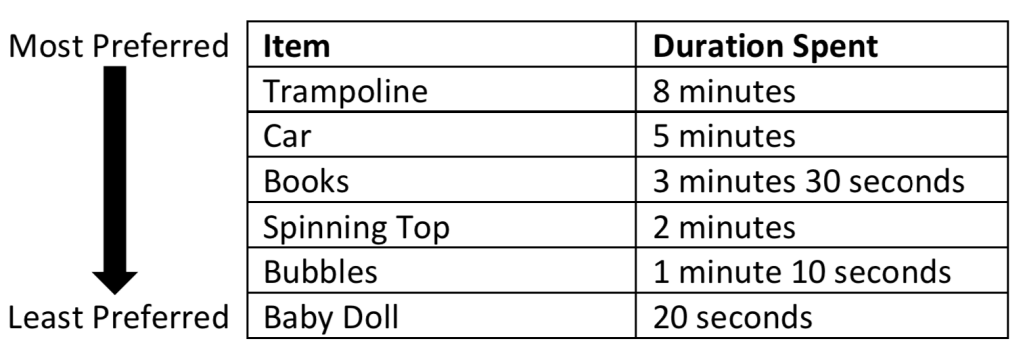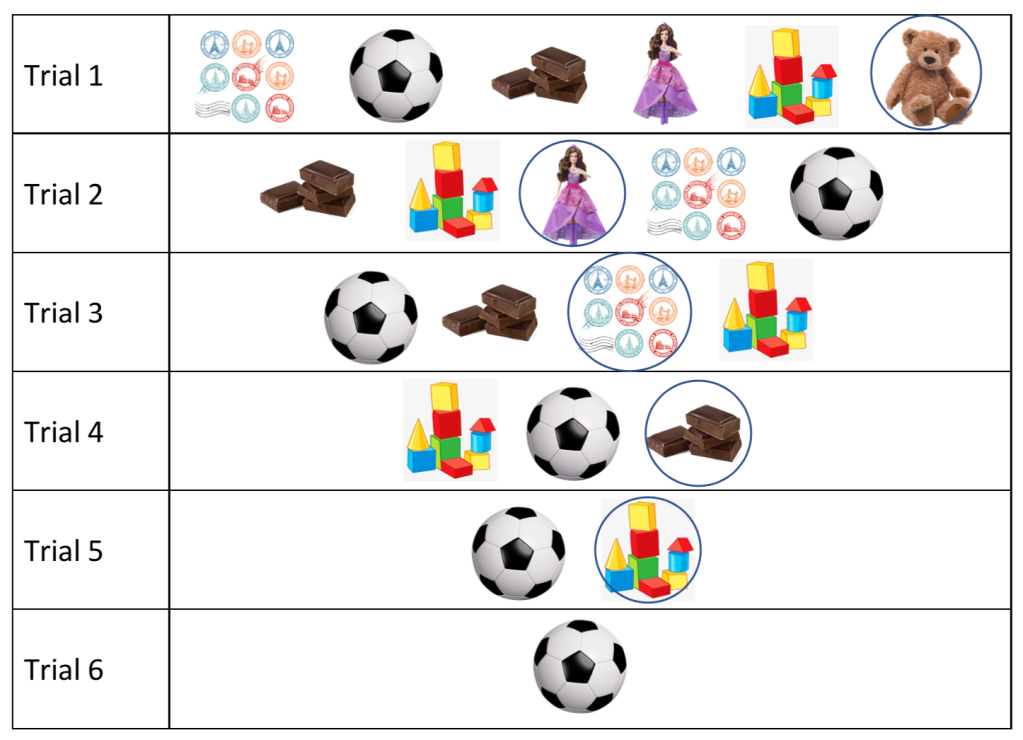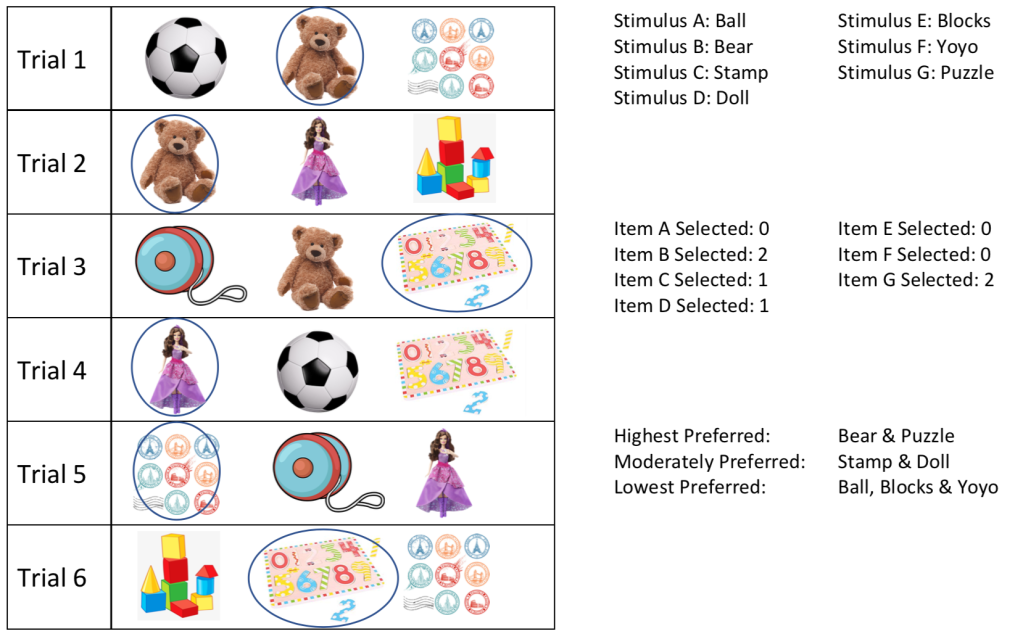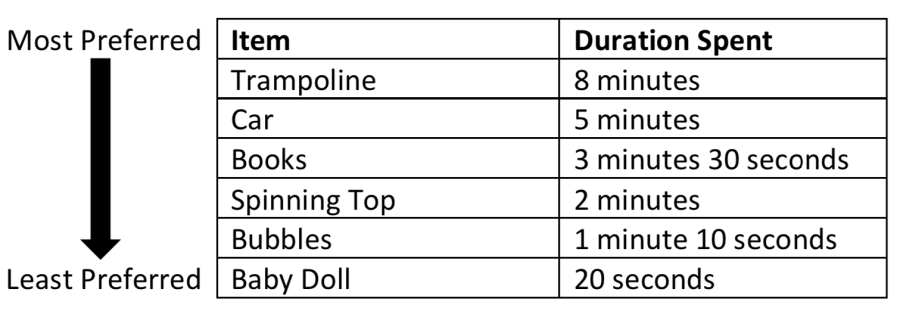Preference assessments help us to determine and rank the most highly desired item that can serve as a reinforcer down to the least desired item. This allows us to know what would serve as a good reinforcer for the client to work for. Additionally, preference assessments also allow us to utilise differential reinforcement more effectively to teach a client by providing a more highly preferred item when the client engages in a more difficult task, and providing a less preferred item when the client engages in an easier task.
Now that we have an idea what preference assessments are, let us look at the different types of preference assessments. These would be: 1) the free operant preference assessment; 2) the paired stimulus preference assessment; 3) the multiple stimuli without replacement; and 4) the multiple stimuli with replacement.
___________________________________________________________________________
Free Operant Preference Assessment
This assessment can be utilised with clients who have difficulty giving up a preferred item. The client is brought to a room with multiple items present (i.e. bubbles, train set, books, ball, trampoline, etc.). The client is allowed to move around the room and interact with the items as long as they want to. A set period of time is set (i.e. 20 minutes). During this duration, the observer would record the duration the client interacted with each item. The items the client interacts with the longest would be consider the most highly preferred whilst the items the clients interacts with the least would be the least preferred.

Paired Stimulus Preference Assessment
A set number of items are chosen initially (i.e. 6 items). Should we assigned each stimulus an alphabet, each of this stimulus is paired with one other stimulus (i.e. ‘A’ versus ‘B’; ‘A’ versus ‘C’; ‘A’ versus ‘D’; etc.). These sets of stimuli are presented to the client and the assessor marks which stimulus the client was interested in. The client is allowed to interact with the chosen stimulus for a few seconds before the stimulus is removed. The total number of times the client interacts with each stimulus is tallied and ranked in terms of most preferred to least preferred.

Multiple Stimulus without Replacement Preference Assessment
A set number of items are chosen (i.e. 6 items). These items are placed in a straight line of similar distance from the client. The client is given the option to choose one. The rest of the items are removed and rearranged. The item chose previously is not added back to the pile. This repeats until the client stops choosing or all items have been chosen.

Multiple Stimulus with Replacement Preference Assessment
With regards to multiple stimulus with replacement, the item the client choses is placed back into the next trial. However, the items were were part of the original trial are removed and replaced completely. For example, if the client chooses item ‘A’ when presented with ‘A’, ‘B’, and ‘C’, the next trial will comprise of items ‘A’, ‘D’, and ‘E’. Hopefully you will have a clearer picture based on the figure below!

_______________________________________________________________________
Hope you guys have a clearer idea of what types of preference assessments there are. Feel free to comment below if you need more clarification or if you have any ideas for future topics you would like me to cover! Please note that it is ideal for a preference assessment to be conducted regularly as preferences can change over time especially when a client is saturated with the item.


